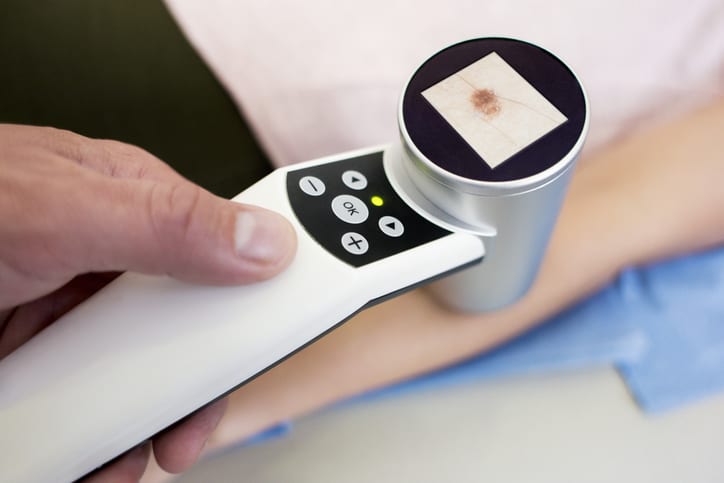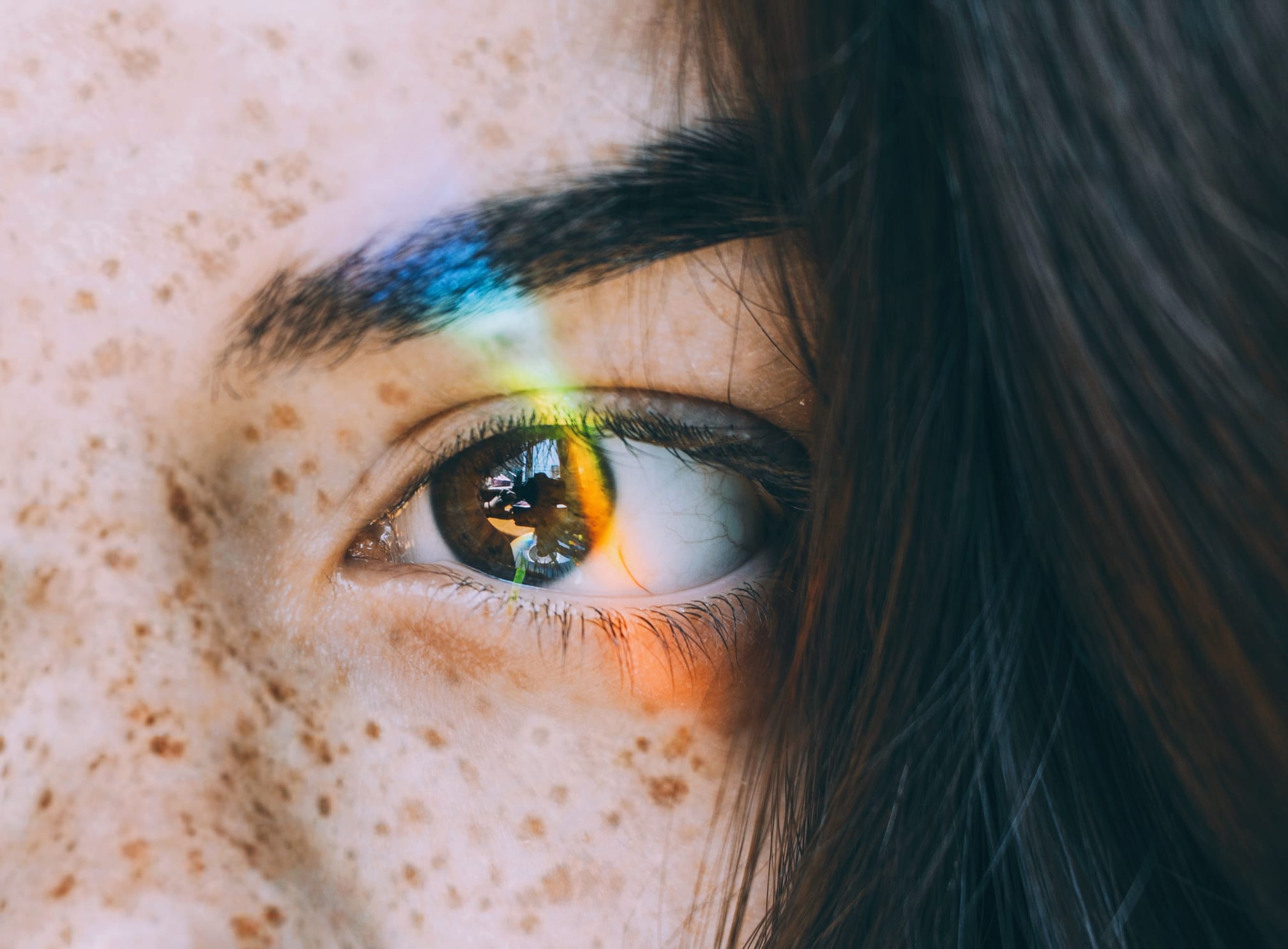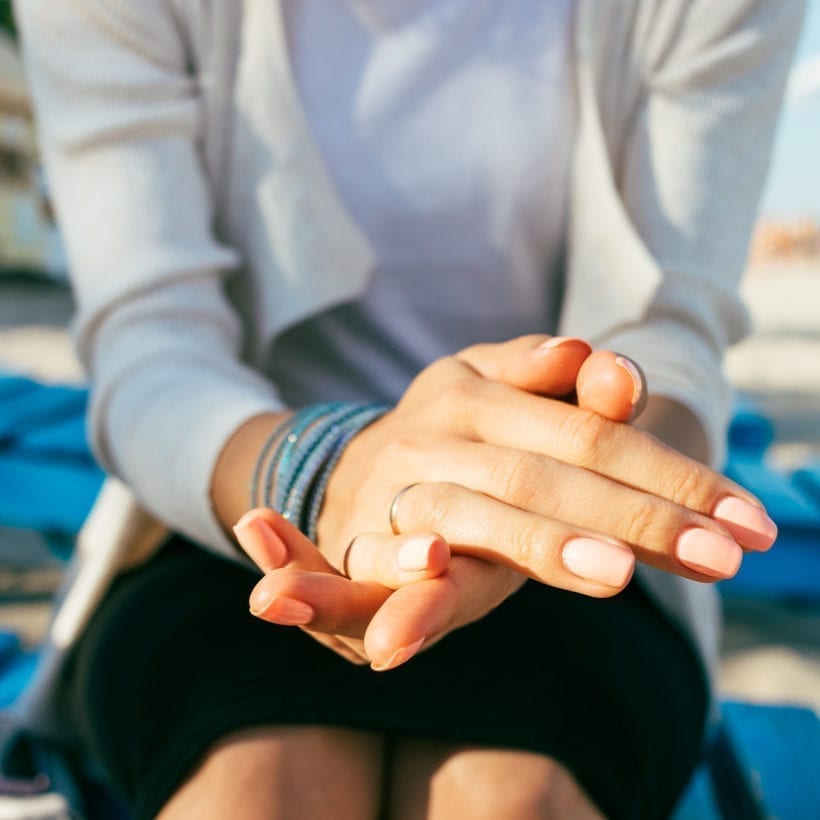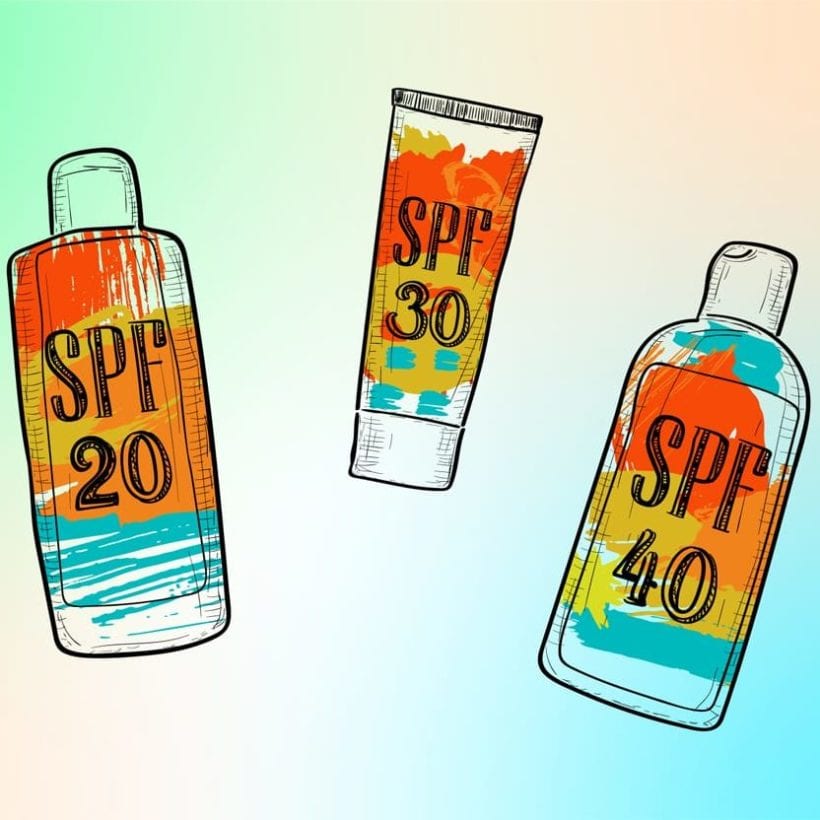It seems like there’s a national day or month of pretty much anything you can imagine these days — National Ice Cream Day, National Wine Month, and so on. But each year, the month of May marks an occasion that’s truly worthy of a dedicated month and of the utmost importance to draw attention to; May is National Skin Cancer Awareness Month.
Skin cancer is the most common form of cancer in the United States and, according to the American Academy of Dermatology, an estimated 1 in 5 people will be diagnosed in their lifetime. And while it can’t be stressed enough how important it is to take the proper precautions to prevent skin cancer from forming in the first place (wear a sunscreen of at least SPF 30 every day, stay out of the sun as much as possible, wear UPF protective clothing, and so on), it’s also important to get ahead of anything that might be brewing within your skin.
The best, most effective way to do this is to see your dermatologist for regular skin checks. Perhaps you’ve heard about skin checks before and either assumed it was something for later in life or got spooked by the process and decided not to book an appointment. But you’re actually supposed to start getting skin checks fairly early on in life— as early as your teens depending on your risk factor. But the good news is, these appointments are quick, efficient, and relatively painless. Curious about when exactly you should get your first skin check and what goes down at the appointment? Ahead, two board-certified dermatologists explain everything you need to know.
Who Is at Risk for Skin Cancer?
It’s important to start by saying that absolutely anyone can develop skin cancer regardless of age, family history, or how melanated their skin is. Even if you’re extremely diligent about reapplying your sunscreen and avoiding the sun at all costs, human error is always a factor.
With that being said, according to Dr. Ope Ofodile, a board-certified cosmetic and medical dermatologist based in Atlanta, GA and Dr. Alicia Zalka, a board-certified dermatologist and founder of Surface Deep, you’re at higher risk for skin cancer if you have one or more of the following:
- Fair skin
- Numerous moles
- Freckles
- Vitiligo
- You spend excessive time in the sun
- You have a history of tanning bed use
- You have a history of blistering sunburns, and
- You have a first-degree relative that’s been diagnosed with melanoma
When Should You Begin Routine Skin Checks?

It’s difficult to name a specific age when there are so many personal history factors to consider, but as a general rule of thumb, if you’re not at a heightened risk of skin cancer, you should start seeing your dermatologist for annual skin checks once you reach your early 20s. If you meet one or more of the above conditions, it’s recommended to visit your dermatologist even earlier.
While annual checks are recommended (especially after the age of 30, according to Dr. Ofodile), your dermatologist may recommend more frequent or less frequent appointments after your initial evaluation. That’s why it’s so important to get into the office for that first appointment — after thoroughly evaluating your skin, your dermatologist might determine that you’re at extremely high risk and that you should be visiting the office every 3-6 months for skin checks. They can also give you pointers for how to give yourself a self-exam.
Here’s What Happens During a Skin Check at the Derm’s Office
Skin checks are nothing to be afraid of — and as someone who’s had over 20 moles removed, I can tell you that when under the care of a board-certified physician, it’s not a painful or arduous process.
At a typical skin cancer screening appointment expect to provide the doctor or nurse a history regarding your family skin history and personal sun exposure history.
“Your doctor will ask you to remove your clothing and provide you a medical gown for the duration of the visit, so all areas of skin can be examined,” says Dr. Zalka. “I am careful to check feet, toes, scalp, lips, ears, nails, pubic skin, buttocks, along with the rest of the skin. The more areas I can assess, the better the screening. I try to make my patients feel comfortable, as no one enjoys being looked at so closely, but the more thorough the better. However, the exam is perfectly painless, and it can be done rather speedily.”

Dr. Odofile adds to this, saying, “A full body skin check is performed by careful examination of every inch of your skin, including your scalp and in between your toes,” says Dr. Ofodile. “Most dermatologists also use a dermatoscope to better assess your moles for any abnormality.” A dermatoscope is essentially a tiny (but powerful) handheld microscope that allows your dermatologist to get a really good look at anything suspicious.
And the good news is, if your dermatologist does happen to spot any suspicious-looking moles, they can typically be biopsied the same day in order to confirm a diagnosis. (“Biopsy” is a scary word, but you’ll be thoroughly numbed so you’ll barely feel a thing.)
“The suspected mole is cleaned, numbed with a local anesthetic, and removed with a small razor,” explains Dr. Ofodile. “Any bleeding is then controlled with a topical solution and a bandaid is placed on the area. The process usually takes less than five minutes in most cases.”
How to Prepare for Your Appointment
In order to help your dermatologist ensure that your appointment goes as smooth as possible, Dr. Zalka has a few helpful tips that can cut back on time spent in the office (and ultimately give you a more thorough examination). For starters, she recommends coming without makeup or nail polish, as these can interfere with examining the skin and nails. She also recommends coming with a written (or mental) list of specific areas where you’ve seen a mole that concerns you (or one you simply want to ask questions about, so your dermatologist can keep you informed about what a red flag looks like compared to a typical mole). It’s also helpful (but not mandatory) to be familiar with your family history of skin cancer so your physician can determine how often you should be returning for exams.
The Takeaway
Everyone should visit a dermatologist in their early 20s for a “baseline” skin check appointment (and even earlier if you’re at higher risk for skin cancer). This baseline appointment will give your doctor an idea of how frequently you should be visiting the office for skin checks in the future based on your lifestyle, current condition of your skin, and family history of skin cancer. Skin checks are nothing to be afraid of — modern medicine has made this an extremely quick, painless process, so there are no excuses. Give yourself some peace of mind and book your skin check during Skin Cancer Awareness month.
We only recommend products we have independently researched, tested, and loved. If you purchase a product found through our links, Sunday Edit may earn an affiliate commission.







